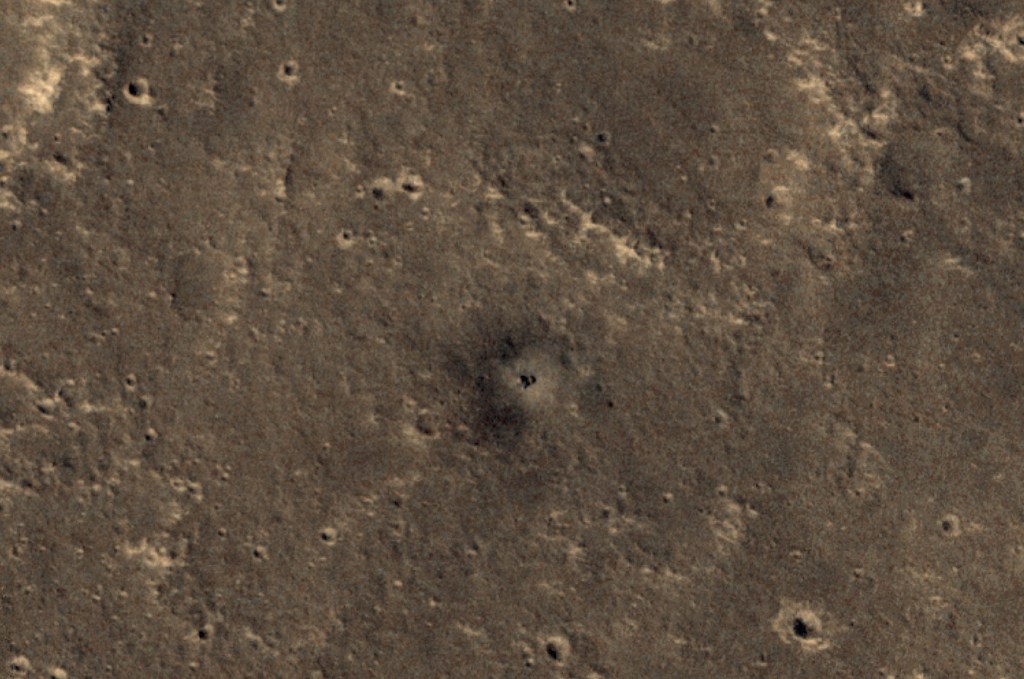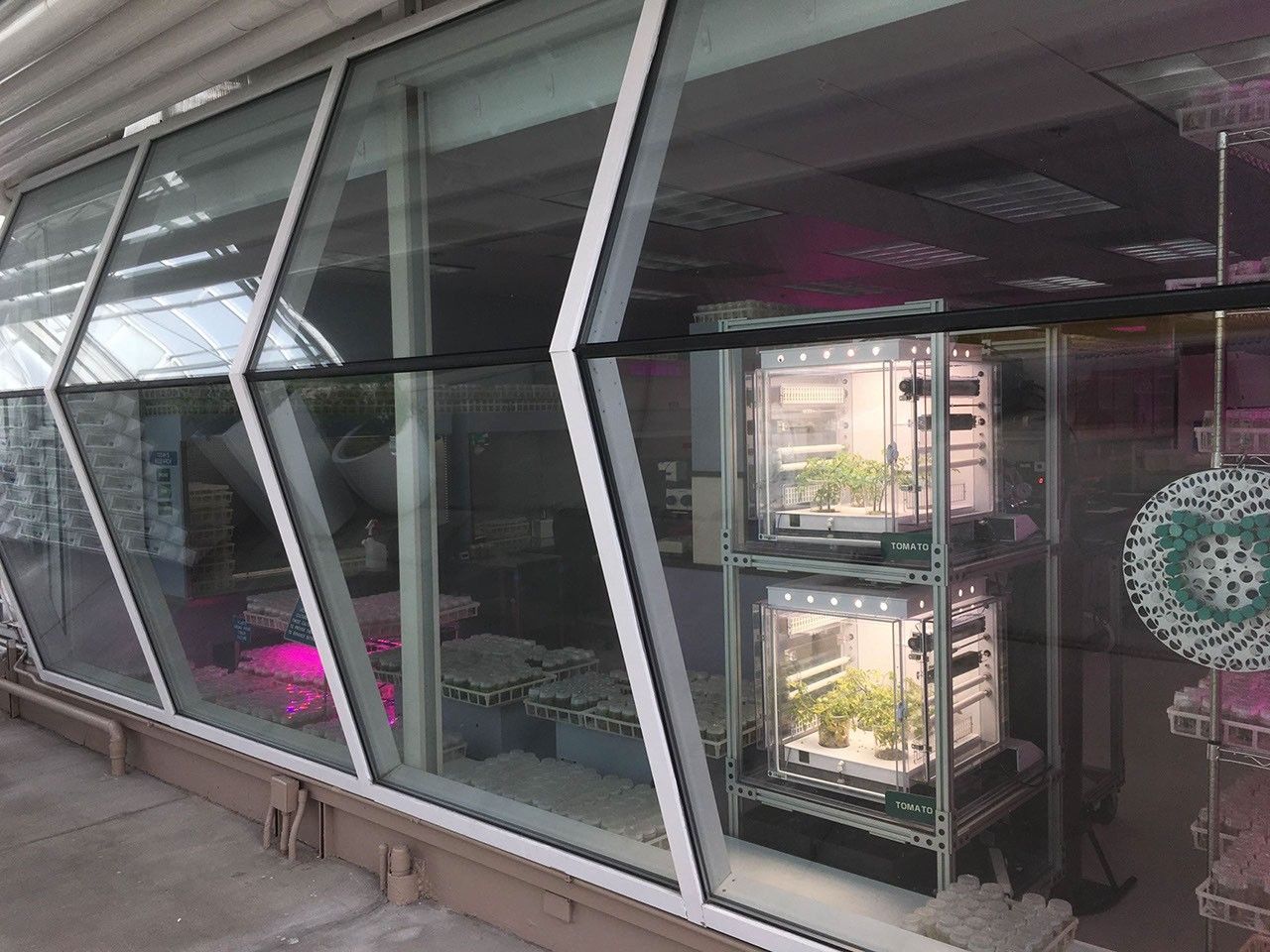The HiRISE camera on NASA’s Mars Reconnaissance Orbiter recently sent home eye-catching views of the agency’s InSight lander and its Curiosity rover.
HiRISE has been monitoring InSight’s landing site in the Elysium Planitia region of the Red Planet for changes to the surface, such as dust-devil tracks. Taken on Sept. 23, 2019, at an altitude of 169 miles (272 kilometers) above the surface, the new image is NASA’s best view yet of InSight from space. It clearly shows the two circular solar panels on either side of the lander body, spanning 20 feet (6 meters) from end to end.
The bright spot on the lower side of the spacecraft is the dome-shaped protective cover over InSight’s seismometer. The dark halo surrounding the spacecraft resulted from retrorocket thrusters scouring the surface during landing, while dust devils created the dark streaks that run diagonally across the surface.
Several factors make this image crisper than a set of images released after InSight’s November 2018 landing. For one thing, there’s less dust in the air this time. Shadows are offset from the lander because this is an oblique view looking west. The lighting was also optimal for avoiding the bright reflections from the lander or its solar panels that have obscured surrounding pixels in other images. However, bright reflections are unavoidable with the seismometer cover just south of the lander because of its dome shape.
Driven by Curiosity
HiRISE has also been keeping tabs on NASA’s Curiosity, which is roughly 373 miles (600 kilometers) from InSight, exploring a region called “the clay-bearing unit.”
A GIF released today shows Curiosity as a gray speck as it traveled 1,106 feet (337 meters) from a location within the clay-bearing unit called “Woodland Bay” (top center) to “Sandside Harbour” (bottom center, near the dark sand patch) between May 31 and July 20, 2019.
Look carefully and you can even see the rover’s tracks arcing to the right side of the second image.
NASA’s Jet Propulsion Laboratory in Pasadena, California, manages the InSight, MRO and Curiosity missions for NASA’s Science Mission Directorate in Washington. JPL is a division of Caltech. The University of Arizona in Tucson operates HiRISE, which was built by Ball Aerospace & Technologies Corp. in Boulder, Colorado. MRO was built by Lockheed Martin Space.
Find more information about InSight, Curiosity, MRO and HiRISE at:
https://mars.nasa.gov/insight/
About InSight
InSight is part of NASA’s Discovery Program, managed by the agency’s Marshall Space Flight Center in Huntsville, Alabama. Lockheed Martin Space in Denver built the InSight spacecraft, including its cruise stage and lander, and supports spacecraft operations for the mission.
A number of European partners, including France’s Centre National d’Études Spatiales (CNES) and the German Aerospace Center (DLR), are supporting the InSight mission. CNES provided the Seismic Experiment for Interior Structure (SEIS) instrument to NASA, with the principal investigator at IPGP (Institut de Physique du Globe de Paris). Significant contributions for SEIS came from IPGP; the Max Planck Institute for Solar System Research (MPS) in Germany; the Swiss Federal Institute of Technology (ETH Zurich) in Switzerland; Imperial College London and Oxford University in the United Kingdom; and JPL. DLR provided the Heat Flow and Physical Properties Package (HP3) instrument, with significant contributions from the Space Research Center (CBK) of the Polish Academy of Sciences and Astronika in Poland. Spain’s Centro de Astrobiología (CAB) supplied the temperature and wind sensors.
Andrew Good
Jet Propulsion Laboratory, Pasadena, Calif.
818-393-2433
andrew.c.good@jpl.nasa.gov
Alana Johnson
NASA Headquarters, Washington
202-358-1501
alana.r.johnson@nasa.gov
2019-205
































